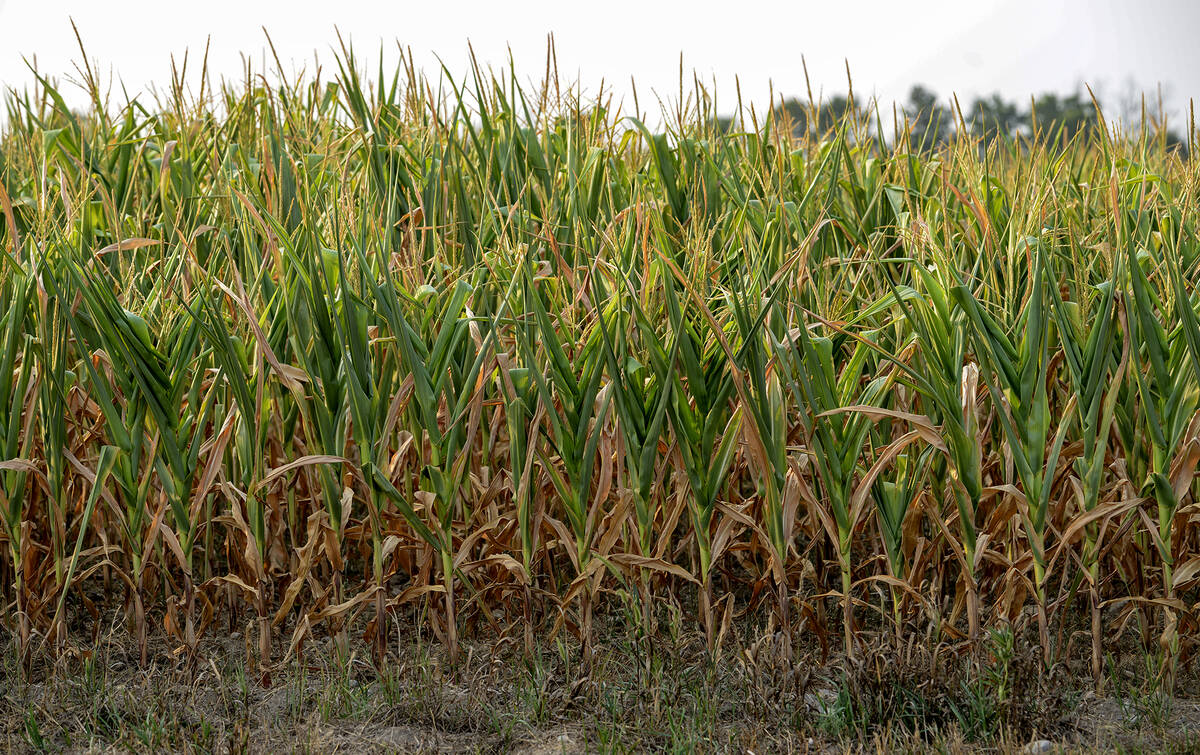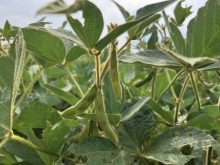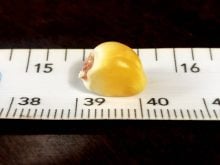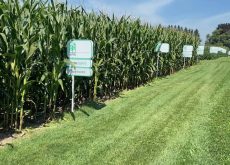As the importance of soil health gains recognition, its reach extends beyond nitrogen, phosphorus, potassium and sulphur.
Boron, a micronutrient, is getting more attention among advisors and growers, mostly because of its role in plant health and performance.
Cell formation, cell wall and vascular tissue formation, node number and plant height, flower development, pollen viability, pod formation and seed set are all influenced by boron. Plants require an ongoing supply, since it’s not mobile nor are plants able to recycle it from old tissues.
Read Also

Extreme variability marks Ontario’s 2025 corn crop
The yield potential of Ontario’s 2025 corn crop was lost in some areas due to extreme dry conditions.
Soil levels of boron can range from 0.5 ppm (low) to one ppm (high). When boron is a limiting factor, symptoms appear in young tissue and deficiencies can reduce flowering and pod set.
Why it matters: Agronomists say growers should pay attention to boron levels in soil to maintain soybean yields.
Soil tests conducted by the Fertilizer Institute across North America every five years indicate several nutrient levels are declining. As growers continue to push yields, the importance of boron is magnified for soybeans, as well as corn, wheat, fruits and vegetables.
It’s why Aaron Stevanus refers to boron as a “low-hanging fruit.”
“If we’re capping out any of these as we push for more yield, we’re going to start running into challenges, especially if we haven’t been fertilizing for it in the past,” says Stevanus, a technical sales manager for The Mosaic Company.
“It’s a hurdle we’re going to have to understand, just to keep food sustainable.”
In the past, boron deficiency has mostly been associated with alfalfa, yet sources in the U.S. are seeing its decline in soybeans.
“An average crop production fertilizer plan doesn’t have a lot of boron,” Stevanus says. “There’s more knowledge of it and recommendations in crop plans than ever, but there’s still a big hurdle in the next five to 10 years.”Mervyn Erb, a certified crop advisor, calls boron “one of the most common micronutrient shortages in tissue tests”, dating back to his days in the fertilizer retail business in the early 1980s.
“Corn, soybeans and edible beans, but the most common visual deficiency is in alfalfa,” says Erb, who operates Agri-Solve Agricultural Consultants, north of London.
“In the last five to six years, I would say it’s not uncommon to see soil tests in the 0.2 to 0.4 ppm range. Back in the old days, 0.6 ppm was really low. But we’re removing more than we’re applying.”
In mid-summer 2022, Erb was looking at soil tests from nine fields of winter wheat, all from the same progressive grower. Phosphorus levels were over 30 ppm and potassium levels were 149 to 223 ppm, but boron ranged from 0.3 to 0.5 ppm. In 2021, the same grower had several fields at 0.2 ppm.
Erb notes boron’s cost and the need for specific research. Last fall boron sold for about $9 per pound, and roughly three pounds per acre of broadcast boron are needed to be effective. As well, there are concerns about toxicity and issues with storage, handling and blending.
Research on boron in soybeans is under way in Eastern Canada by Horst Bohner, soybean specialist with the Ontario Ministry of Agriculture, Food and Rural Affairs. The 2022 growing season marked the second year of trials with Aspire, a potash-based granular fertilizer offering two forms of boron with 0.25 per cent of each form. There is a “quick-release” sodium borate formulation and a gradual-release (later-season) calcium borate.
Company literature notes Aspire uses Nutriform technology, delivered at the root level and providing season-long availability. The formulation helps with distribution, which is a primary challenge with boron, especially in granular applications in the amount that’s needed.
– Read more on this topic by Ralph Pearce at Country Guide.













